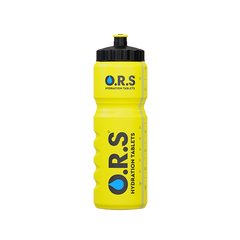Dehydrated Vs. Dry Skin: How Can You Tell The Difference?

The chillier autumn weather is with us, and most of us will be using the central heating again, after an admittedly not very long or hot summer. Workplaces and other public spaces will also be cranking up the heat, and this can mean bad news for your skin, causing it to become more dehydrated than usual.
The air also becomes dryer during colder weather, and this means that moisture is more easily drawn from your body, and not quickly replaced. This can leave you with skin that feels dry and uncomfortable. However, there is a difference between chronically dry skin and dehydrated skin, although they may have similar symptoms.
Here’s a look at the key differences and how best to care for your skin at this time of the year.
What is dehydrated skin?
Dehydrated skin is a condition, rather than a particular skin type. The most common cause is an inadequate fluid intake, whereby the body has lost more water that it takes onboard. This can be simply through not drinking enough because we are busy, distracted, do not have access to clean drinking water or other beverages, or fail to recognise the signs of thirst.
Our hydration levels may also be depleted through excessive sweating during intensive exercise sessions, high alcohol intake, or through an illness such as diarrhoea, fever, or a heavy cold. These viruses can be more common at this time of the year as we all spend more time indoors and the colder weather lowers our immunity.
As previously mentioned, our skin can also become drier due to environmental factors, such as central heating and dry cold air during autumn and winter. As we become more dehydrated, our bodies redirect the fluids that we do have to maintain the vital organs, and thus less moisture reaches the skin.
What are the signs of dehydrated skin?
The aforementioned factors can result in skin that feels tight and uncomfortable, and appears dull, without its usual plumpness and softness. There may be signs of fatigue, such as drawn cheeks and hollows or dark circles under the eyes. Dehydrated skin may be more sensitive and more prone to rashes and irritation than dry skin.
It is still possible to have skin that is dehydrated but not dry, because excess sebum production may be triggered as part of the body’s natural defence mechanism, causing it to look oily or shiny while still feeling dry. Dehydrated skin may take a while to regain its shape after you have pinched it or put pressure on it.
How can dehydrated skin be treated?
As ever, prevention is better than cure, so it’s important to manage your hydration levels with care as we go into autumn. It’s best to drink plain water whenever possible, because caffeinated drinks and sugary drinks can cause more frequent urination. Avoid washing with hot water; cooler water will keep your skin softer and more supple.
Use a moisturiser or serum to seal in moisture after washing, and reapply as and when required. If you have become very dehydrated, you may have become depleted in essential vitamins and minerals known as electrolytes. This can make you feel tired and low in energy, and it will also take longer for your body to rebalance fluid levels.
This can be addressed by adding an electrolyte tablet to your water, which will help your body to absorb fluids more efficiently and also replenish the lost electrolytes.
What is dry skin?
Dry skin is a particular skin type, rather than a condition caused by external factors, although these can make it worse. Dry skin lacks oil, which may be the result of a hormonal imbalance; older age; malnutrition or health problems; or skin conditions such as eczema or dermatitis.
Signs of dry skin
Dry skin may feel tight, rough, and sensitive, particularly after contact with water. It may be prone to flaking, peeling or cracking, especially during colder weather. In appearance, it may look red or uneven toned, with rough or scaly patches and a dull appearance, because the loss of smoothness means that it reflects less light.
Lines, wrinkles and sagging may be more pronounced, because of the lack of moisture that usually gives skin its elasticity and plumpness. The skin may be more prone to itchiness, and it may develop fine cracks that bleed, especially on exposed areas such as the hands.
How can dry skin be treated?
The primary method of treating dry skin is with the application of moisturising products, which create a barrier over the surface of the skin to trap moisture in and prevent it escaping. Very dry skin is best treated with emollients, which are heavier than regular creams and lotions.
If you have very sore cracked hands, it can be helpful to put the emollient on just before you go to sleep at night, and wear light cotton gloves to prevent it from transferring onto your bedding. If all of your skin is dry, emollients can be added to bathwater.
Skin that is persistently itchy and inflamed may be the sign of a condition such as eczema or dermatitis. In this case, it’s best to consult your doctor as it may require prescription treatments such as hydrocortisones.
Avoid skincare products that contain harsh chemicals or artificial fragrances and colouring, as this can irritate dry skin further. Avoid long hot showers that will further dry out the skin; keep them under ten minutes if possible, and apply a moisturiser shortly after drying yourself.
So there you have it: two frustrating problems that can be more pronounced in the autumn. It's important to be aware of the differences so that you can take the most effective preventative measures and treatments, whether that’s using rehydration tablets or using oil-rich moisturisers.

